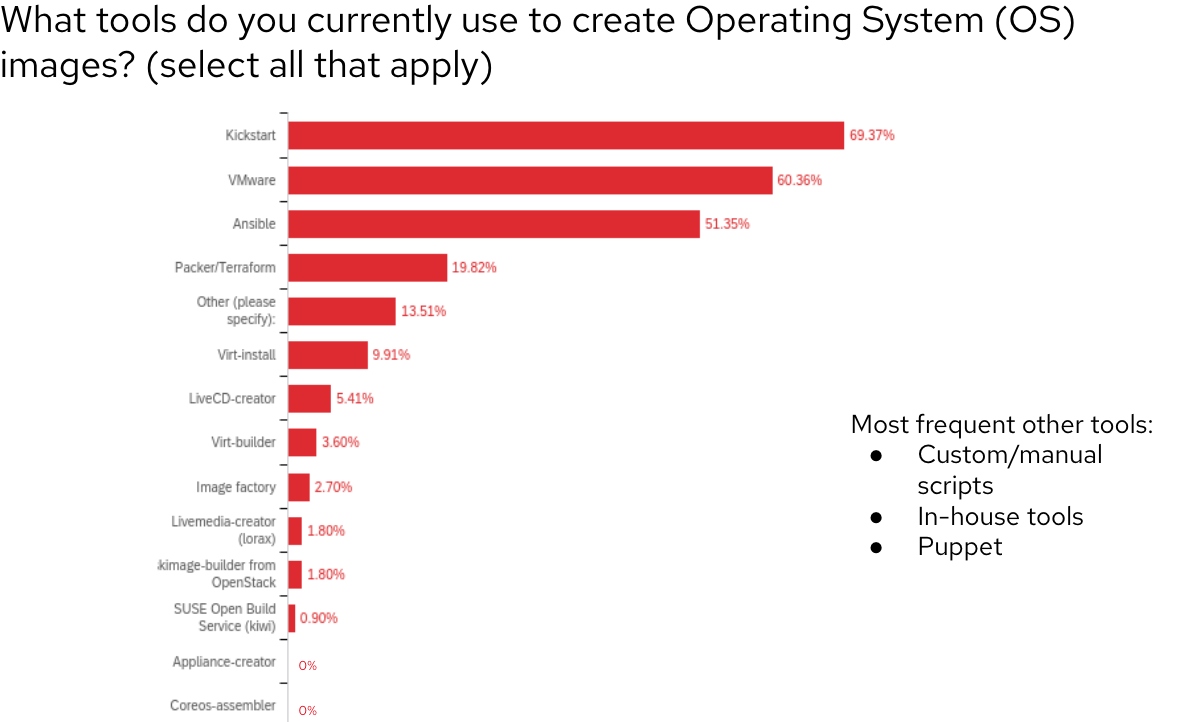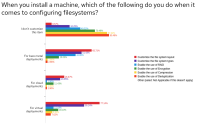-
Epic
-
Resolution: Done
-
Normal
-
None
-
None
-
None
-
Document Root Drive Use Case
-
None
-
rhel-sst-ccs
-
None
-
False
-
False
-
None
-
None
-
None
-
Undefined
-
Unspecified
-
Unspecified
-
Unspecified
Red Hat customers are in general configuring RHEL Servers (as compared to Workstations [in specialized situations] or desktops [unusual]. There are a series of items they must consider when setting up the root devices for these servers. RHEL documentation should guides them through these decisions.
Here are some facts for a UXD project investigating how customers create root file systems. It isn't brand new, but these issues stay relatively the same over time. The work was done in support of Image Builder, which is one of the options we hope customers will choose more frequently with time. At the time of the survey, the following tools were being used for creating the root device when installing the O/S:

Techniques for configuring a root device should be described in the context of these tools.
Additionally, we should be opinionated when explaining the value of a particular choice in the root configuration. As you can see, most customers don't make much use of compression and deduplication. These can be very valuable tools, so understanding how they can be used effectively in root devices could be very useful.

A common concern is identifying and remediating disk full situations. The documents should have vetted recommendations for lowering this possibility. For example, if the root file system is built on top of LVM, it's possible to expand the logical volume the file system has been built on top of.
A working outline for this topic might be:
- Best practices for configuring storage at installation
- Partitioning local drives
- Creating logical volumes
- Setting up boot from SAN (if used)
- Selecting a file system (XFS is the default)
- Selecting a root file system layout (best practices recommendations exist).
- impacts account
-
CS-2459 sha strings
-
- Closed
-

